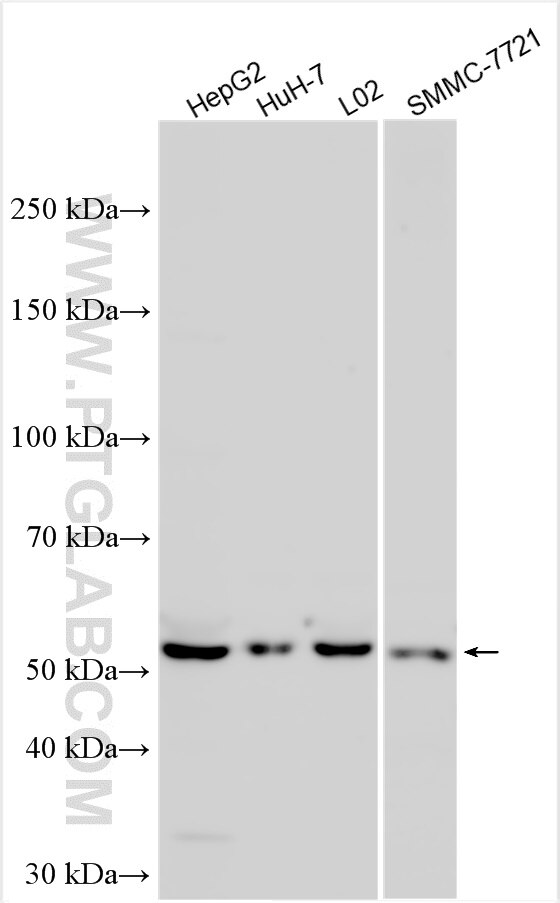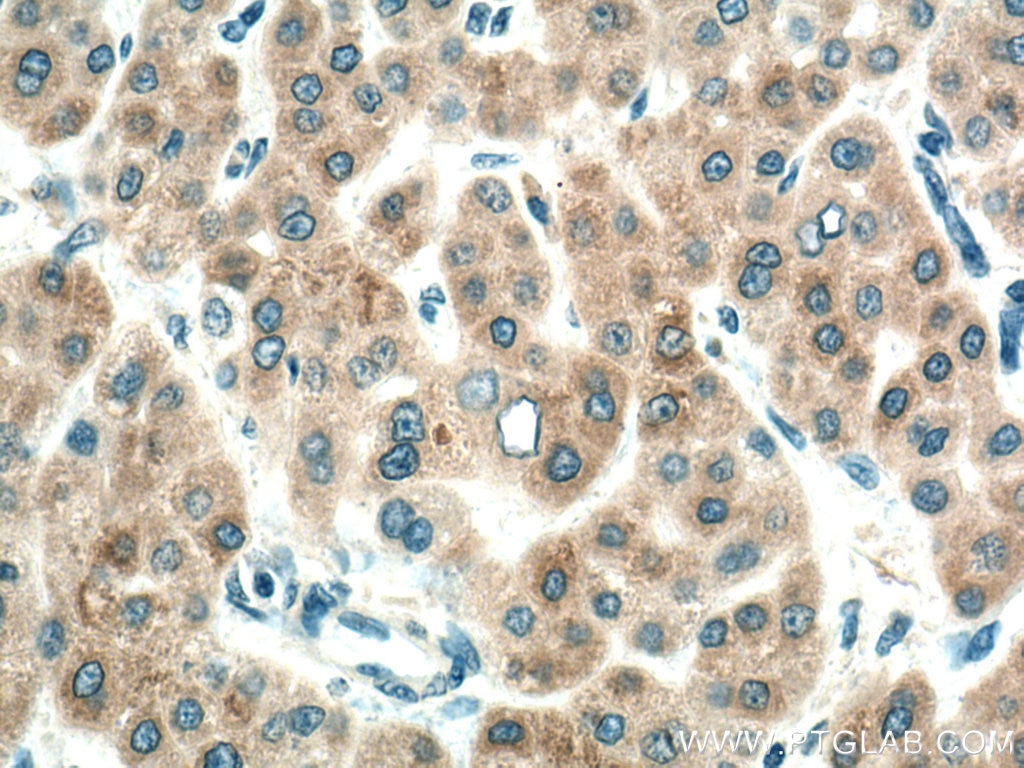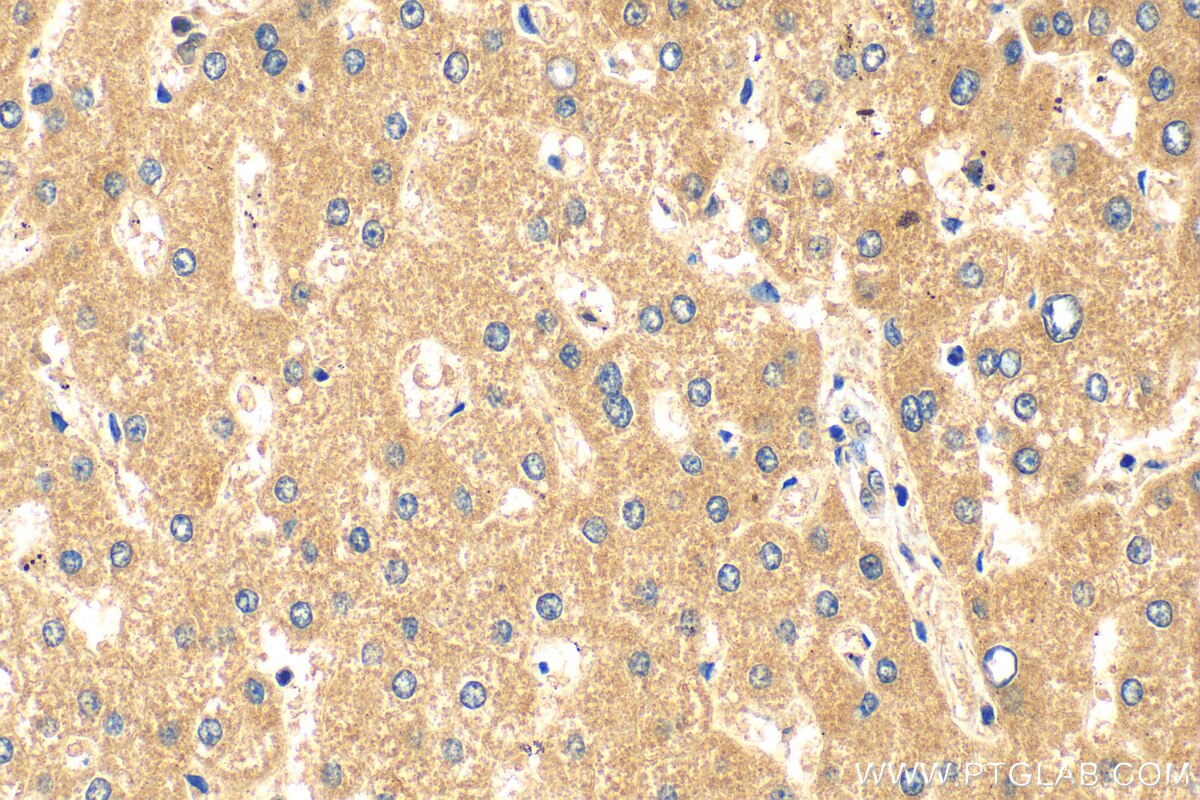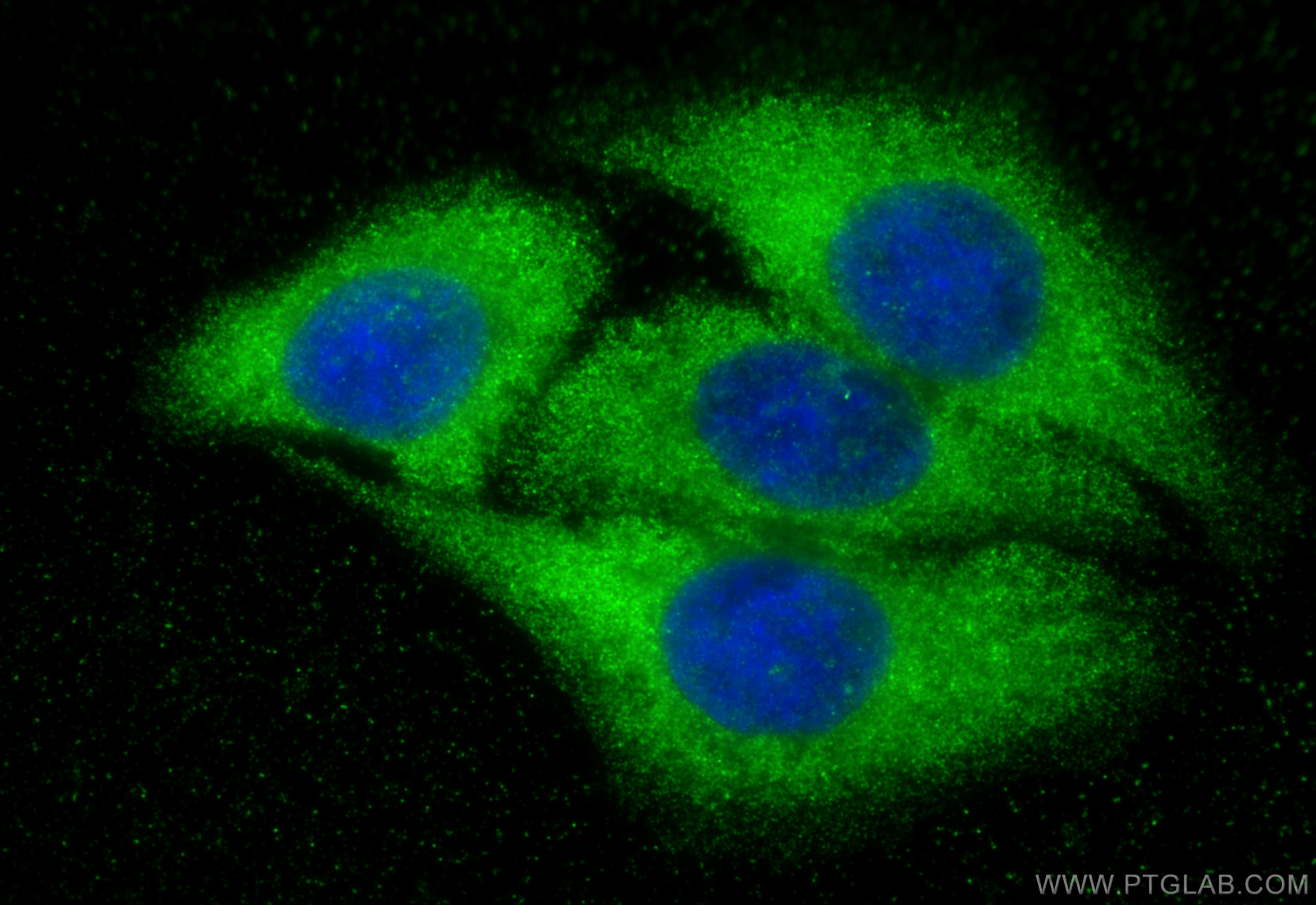Anticorps Polyclonal de lapin anti-CYP7A1
CYP7A1 Polyclonal Antibody for WB, IHC, IF/ICC, ELISA
Hôte / Isotype
Lapin / IgG
Réactivité testée
Humain et plus (3)
Applications
WB, IHC, IF/ICC, ELISA
Conjugaison
Non conjugué
N° de cat : 18054-1-AP
Synonymes
Galerie de données de validation
Applications testées
| Résultats positifs en WB | cellules HepG2, cellules HuH-7, cellules L02, cellules SMMC-7721 |
| Résultats positifs en IHC | tissu hépatique humain, tissu de cancer du foie humain il est suggéré de démasquer l'antigène avec un tampon de TE buffer pH 9.0; (*) À défaut, 'le démasquage de l'antigène peut être 'effectué avec un tampon citrate pH 6,0. |
| Résultats positifs en IF/ICC | cellules HepG2, |
Dilution recommandée
| Application | Dilution |
|---|---|
| Western Blot (WB) | WB : 1:1000-1:6000 |
| Immunohistochimie (IHC) | IHC : 1:50-1:500 |
| Immunofluorescence (IF)/ICC | IF/ICC : 1:50-1:500 |
| It is recommended that this reagent should be titrated in each testing system to obtain optimal results. | |
| Sample-dependent, check data in validation data gallery | |
Applications publiées
| WB | See 19 publications below |
| IHC | See 4 publications below |
Informations sur le produit
18054-1-AP cible CYP7A1 dans les applications de WB, IHC, IF/ICC, ELISA et montre une réactivité avec des échantillons Humain
| Réactivité | Humain |
| Réactivité citée | rat, Humain, souris, Hamster |
| Hôte / Isotype | Lapin / IgG |
| Clonalité | Polyclonal |
| Type | Anticorps |
| Immunogène | CYP7A1 Protéine recombinante Ag12572 |
| Nom complet | cytochrome P450, family 7, subfamily A, polypeptide 1 |
| Masse moléculaire calculée | 504 aa, 58 kDa |
| Poids moléculaire observé | 58 kDa |
| Numéro d’acquisition GenBank | BC101777 |
| Symbole du gène | CYP7A1 |
| Identification du gène (NCBI) | 1581 |
| Conjugaison | Non conjugué |
| Forme | Liquide |
| Méthode de purification | Purification par affinité contre l'antigène |
| Tampon de stockage | PBS with 0.02% sodium azide and 50% glycerol |
| Conditions de stockage | Stocker à -20°C. Stable pendant un an après l'expédition. L'aliquotage n'est pas nécessaire pour le stockage à -20oC Les 20ul contiennent 0,1% de BSA. |
Informations générales
CYP7A1 (Cytochrome P450 Family 7 Subfamily A Member 1), is a cholesterol 7alpha-hydroxylase, catalyzing the first and rate-limiting step in the neutral or classic pathway for bile acid biosynthesis. CYP7A1 is a postulated gene modifier of colorectal cancer risk and target for the therapeutic bile acid, ursodeoxycholic acid (UDCA). The CYP7A1 enzyme controls the rate-limiting step of the catabolism of cholesterol into bile acids in the liver.
Protocole
| Product Specific Protocols | |
|---|---|
| WB protocol for CYP7A1 antibody 18054-1-AP | Download protocol |
| IHC protocol for CYP7A1 antibody 18054-1-AP | Download protocol |
| IF protocol for CYP7A1 antibody 18054-1-AP | Download protocol |
| Standard Protocols | |
|---|---|
| Click here to view our Standard Protocols |
Publications
| Species | Application | Title |
|---|---|---|
Cell Mol Gastroenterol Hepatol Endoplasmic Reticulum Stress Regulates Hepatic Bile Acid Metabolism in Mice. | ||
Cell Mol Gastroenterol Hepatol A Mitochondrial DNA Variant Elevates the Risk of Gallstone Disease by Altering Mitochondrial Function. | ||
Ecotoxicol Environ Saf Triclosan exposure causes abnormal bile acid metabolism through IL-1β-NF-κB-Fxr signaling pathway | ||
J Ethnopharmacol Multi-omics and chemical profiling approaches to understand the material foundation and pharmacological mechanism of Sophorae Tonkinensis Radix et Rhizome-induced liver injury in mice | ||
J Lipid Res Hepatic Deletion of X-box Binding Protein 1 Impairs Bile Acid Metabolism in Mice. | ||
Toxicol Sci Hepatic, metabolic and toxicity evaluation of repeated oral administration of SnS2 nanoflowers in mice. |







